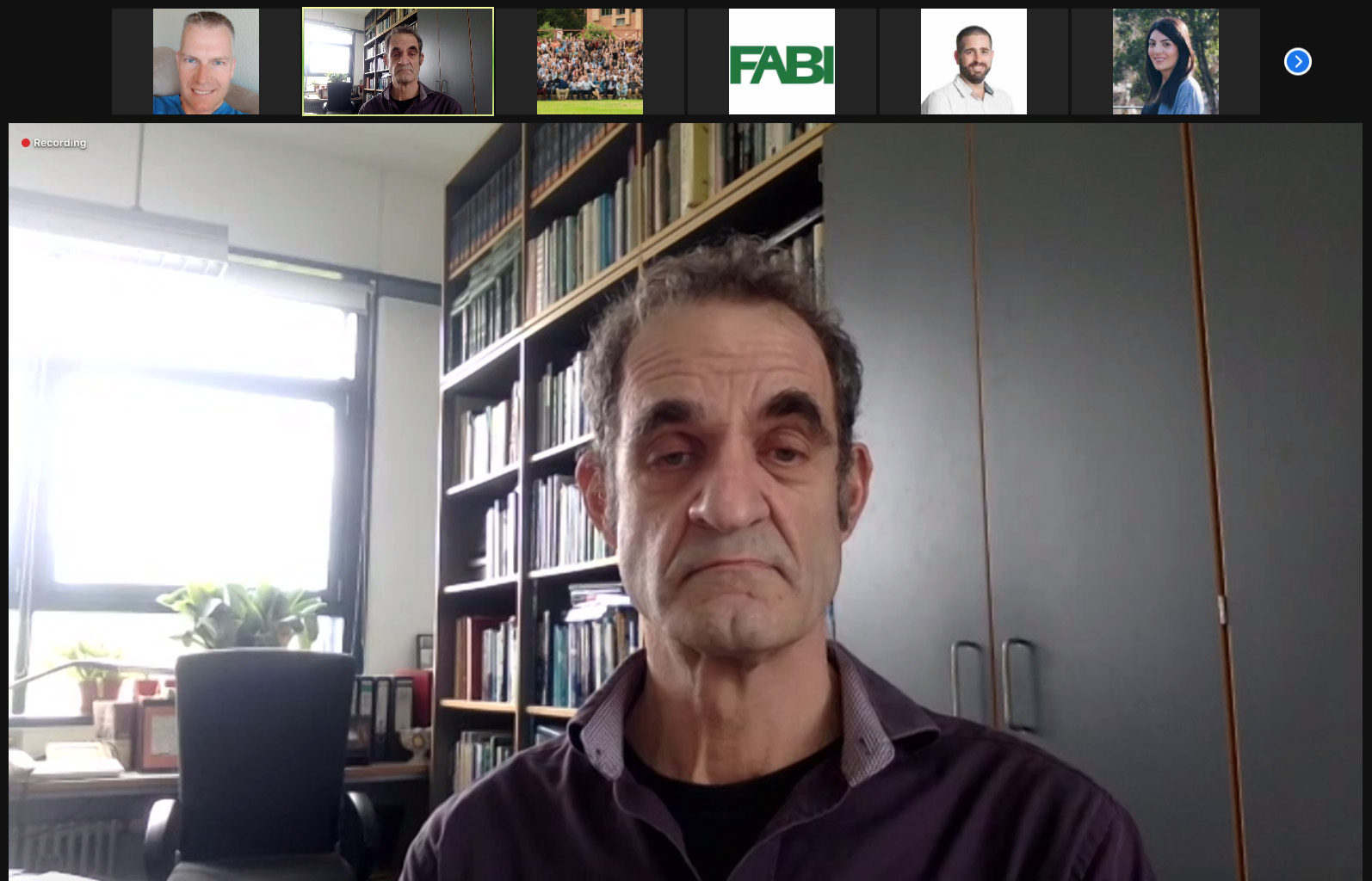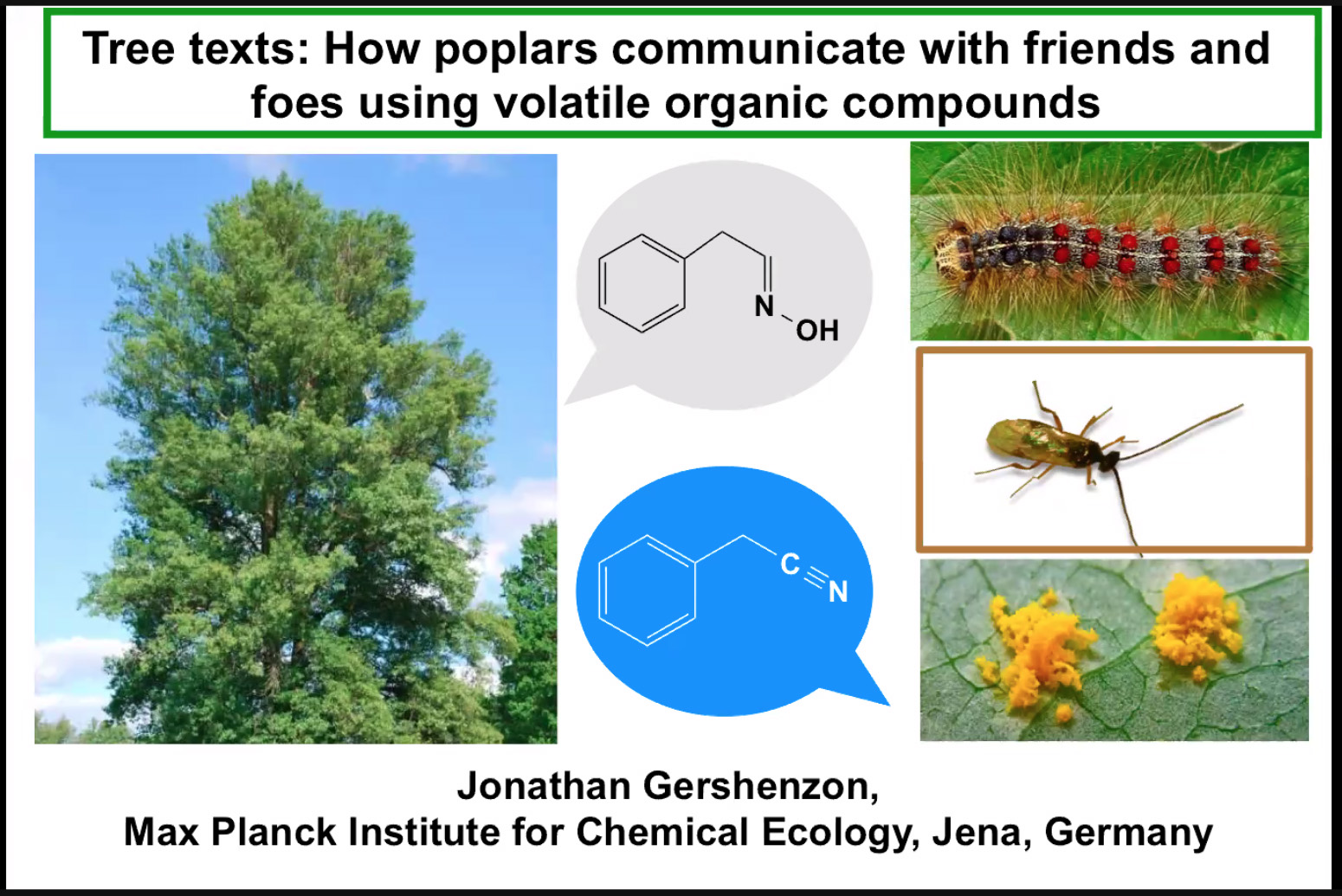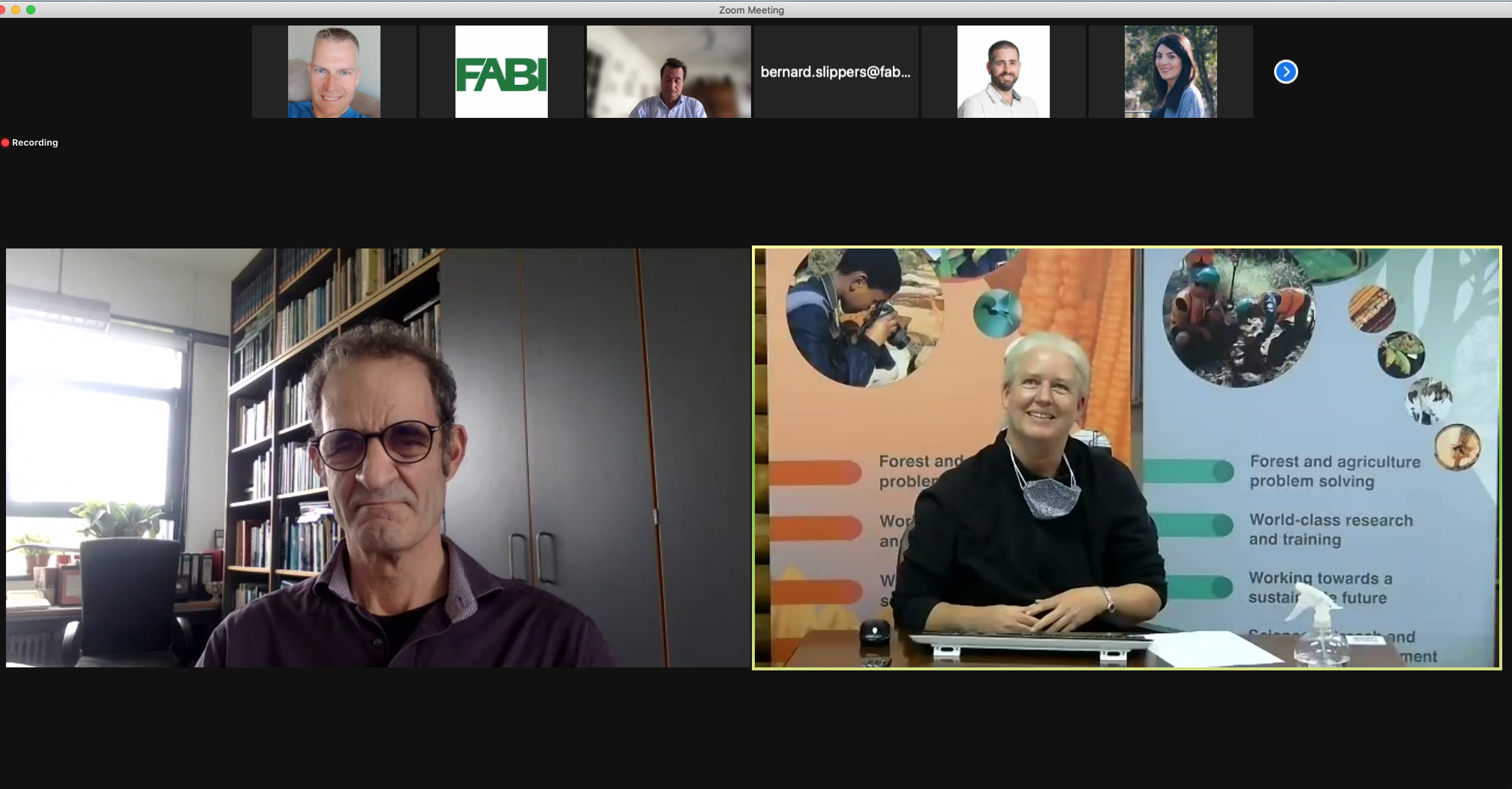Chemical Ecology under the spotlight at the FABI International Seminar Series 2021-06-02
Leading chemical ecologist, Prof. Jonathan Gershenzon, of the Max Planck Institute for Chemical Ecology was the guest speaker at the May FABI International Seminar Series. His presentation, entitled “Tree texts: How poplars communicate with friends and foes using volatile organic compounds” provided a graphic illustration of the complex interactions between the Black poplar (Populus nigra), the Gypsy moth (Lymantria dispar), a parasitic wasp (Glyptapanteles liparidis) and leaf rust (Melampsora larici-populina). Its long been known that plants use volatiles in interactions with insects and microbes. The development of technology in the 1980’s for trapping airborne compounds specifically to monitor air pollution levels led to this technology revolutionising the study of plant volatile interactions using very sensitive and relatively inexpensive Gas Chromatography Mass Spectrometry. In his studies and those of his colleagues he showed how the generalist caterpillar is repelled by damaged foliage, especially after feeding, a parasitoid of this caterpillar is attracted to foliage damaged by its host. Furthermore, after pathogen infection, the caterpillar is attracted and not repelled, while attraction to the parasitoid is reduced. These fascinating interactions and their consequences were beautifully illustrated and led to a lively discussion with the more than 140 people attending the seminar.
A recording of Prof. Gershenzon’s talk can be viewed on the FABI YouTube Channel by clicking here.




